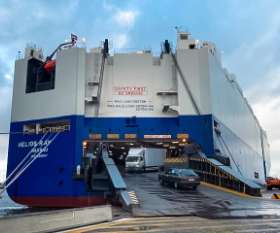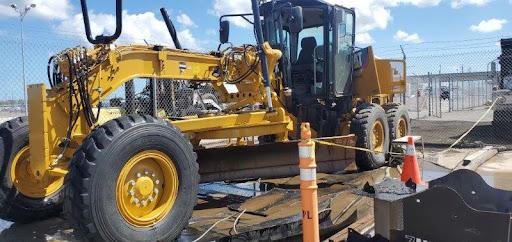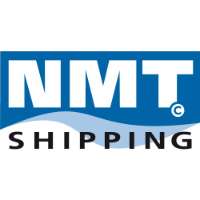Before You Buy Any Machinery
Purchasing machinery is a significant investment, and it's essential to approach the process with careful consideration and attention to detail. Whether you're acquiring heavy equipment for construction, industrial machinery for manufacturing, or any other type of machinery, there are crucial steps you should take to ensure a successful and cost-effective purchase. Below are key steps to take before making your machinery purchase:Where Is The Best Place To Source Used Machinery For Import to Australia?
In a global market with long manufacturing lead times or excessive new prices, a lot of Australian importers are looking to purchase or relocate premium, low-hour, used machinery from overseas. Brands typically include CAT, Komatsu, Hitachi, Liebherr, Tadano, Grove, Wirtgen & Sandvik. Typically we see a range of used machinery being imported including:Such used machinery is often sourced from around the world but we recommend the sourcing of machining from New Zealand, Japan, China, Europe and United States due to regular roll on, roll off shipping services available.
Whilst we cannot provide a list of good machinery brokers to buy from for confidentiality purposes, we can recommend some auction websites we deal with regularly directly or indirectly on behalf of many Australian companies. These auction companies have been in business for many years and have a good reputation for providing good quality, low hour machinery to support Australian business. However we always recommend inspection as these auctions are generally conducted as is, where is.
Additionally before you transfer any money, please verify the supplier is real by researching phone numbers, emails, website and company names. There is alot of fake websites and suppliers being imitated online. We recommend getting a reference or conducting your own google search into the company to verify its legitimacy. Generally if you have had no contact with them previously and they are reaching out to you out of the blue, then you should be extremely skeptical. Custom Brokers have a large database of known suppliers on file, please give us a call on 13 SHIP if you want our opinion if they are legit or not.
Machinery Collection
When buying machinery on a “as is, where is” basis, it is your responsibility to facilitate loading and transport. As long as the machine is still operational then the collection can be a simple process with collection arranged utilising a ramped trailer. As part of shipping solutions, Custom Brokers will offer pickup services of all machinery.What Are Quarantine Risk Materials and Why Are They Important For Imported Machinery?

All machinery purchased overseas needs to be free from all quarantine risk materials (QRM) on importation to Australia. QRM includes:
Due to the complexity of machinery, this often means significant effort to remove all traces of QRM. Cleaning of machinery will typically require the removal of belly plates, dismantling of cab, removal of batteries, flushing of channels and radiator, degreasing (due to soil stuck in grease), vacuuming and hot pressure washing. We have compiled a list of cleaning guides provided by the Department of Agriculture, Fisheries and Forestry (DAFF) for ease of reference.
Failure to comply with these cleaning requirements can lead to a re-export direction from DAFF. This means at your cost you will have to arrange the export of the machine from Australia, washing and shipping back. A re-export is a significant cost and time penalty. As a result we encourage only the use of experienced washing companies overseas. Avoid the risk and book your shipment through Customs Brokers and our global partners NMT Shipping will take care of your shipment professionally.
Did you know that if Custom Brokers arrange the overseas washing through our appointed washing depots that we provide a no re-export guarantee. This means if DAFF finds the cleanliness job completed by our overseas contractors to be non-compliant for entry into Australia, Custom Brokers will pay for all additional costs to ship the machinery overseas, clean and ship it back to Australia.
Please note that all used machinery imported to Australia is subject to verification at a Quarantine Approved Premise (QAP) on arrival. These inspections require machinery to be de-panelled and verified through flushing and inspection to be free from QRM. As a result clients should budget for cleaning charges at both origin and destination.
Air Conditioning / Fire Extinguishers Requirements
The importing of air conditioning and fire extinguishers are restricted imports due to the presence of Ozone Depleting Substances and Synthetic Greenhouse Gases (ODS and SGG) contained within. Such equipment can be included with machinery purchased overseas, which can complicate the customs clearance process of the shipment.Importers can import up to a total of 25 kilograms of synthetic greenhouse gas (hydrofluorocarbons (HFCs), perfluorocarbons (PFCs), sulfur hexafluoride (SF6) or nitrogen trifluoride (NF3)) in equipment during a calendar year before a license is required. It should be noted that the importing of several types of gasses such as HCFC and CFC are prohibited entirely. And whilst we do not expect to see these gasses contained in low hour machinery, we do feel the need to mention it. You should verify the type of refrigerant gas contained in your machine before you proceed further with the purchase.
There is no limit on the number of pieces of equipment and the equipment may be imported in one or more consignments. The most common gas we see charged in air conditioning equipment is R134A, which is a HFC and the amount imported does not normally exceed 3kg.
Importers must keep track of imports containing these gasses over the calendar year to be sure an import is eligible for the low volume exemption. Therefore if you intend to import less than 8 machines a year then you probably won’t require a EQPL license.
However if you are required to have a license, then you must apply for a EQPL License, and you will have an on-going requirement to report and pay levies for the imported quantities of gas to:
- Refrigerant Reclaim Australia – Quarterly
- Ozone Licensing and Reporting System (OLARS) – Half Yearly
Custom Brokers provides administrative support to our clients in applying for a EQPL license and in compiling a list of imports across each period and reporting these directly to the relevant bodies for assessment and invoicing of applicable levies payable.
Did you know – Importers can typically choose to degas machinery overseas prior to shipment to avoid the need for licensing/reporting.
Machinery Repairs and Dismantling

When it comes to buying self propelled machinery you can just about guarantee a mechanical breakdown at some point in your importing journey. Whether it be something simple like a flat battery, a leaking tyre or a broken hose we engage automatically our local mechanics to solve the problem and get your shipment back on track.
Machinery Dismantling can also be utilized to minimize the costs of machinery shipping by removing components such as blades, buckets, aerials and beacons which are adding significant costs to the freight. Such solutions are often provided to our customers as standard when a link to the machine is provided to our team at Custom Brokers.
SHIPPING OPTIONS

When it comes to choosing a shipping method for your machine there is only really three options to consider:
Containerisation cargo is generally the cheapest option due to the sheer scale of container shipping services available when compared to RoRo. Containers however are only suitable for cargo that can physically fit and can be packed and lashed into 20 or 40’ sea containers (hard top or open top). Containers are provided on a lease basis by the shipping line and can be subject to container detention charges if an excessive period of time passes before their return to port/container yard.
The class of machinery we generally offer containerised solutions for include Rollers, Motor Graders, Skid Steer Loaders and Wheel Loaders. Larger versions of such machines can also require dismantling and specialist loading/unloading techniques as the machines may lose their self propelled ability when wheels and/or cab are removed.

Flat Racks like containers are moved by container shipping lines, however have the added benefit of being able to pack cargo that is over length, width or height and can handle a higher payload. However unlike containers the oversized nature of the goods packed on a flat rack can lead to high freight costs due to reduced container carrying capacity on the vessel and specialist equipment. The actual loading of flat racks can incur extra costs as we sometimes need to arrange loading by crane, use additional load restraint and chocks and have our packing verified by a licensed marine surveyor.
Not all ports can handle heavy or oversized flat racks, so careful checking of the route is needed prior to booking to ensure the shipping line can discharge the flat rack as planned. Generally we find customers may consider flat racks when shipping cargo less than 11.6m long such as: Articulated Dump Trucks, Excavators, Compactors, Dozers, Rollers, Wheel Loaders, Motor Graders and small Cranes.
Whenever moving machinery by containers or flat racks, it’s important to verify that the goods are compliant with special provision 961 of the IMDG code, SP961 is detailed below:
By complying with this special provision, we reduce our costs by ensuring the goods are not classified as dangerous goods, and thus avoid a hazardous goods surcharge by the shipping line. Complying for most machines in this article (diesel fueled) is as simple as verifying the isolator is working and toggling it to the “on” position.

The last option to consider and perhaps our favorite for its simplicity is Roll on, Roll off (RoRo). In order to load the vessel we simply just drive or tow the cargo on and secure it on board using specialist anchorage points welded across the entire deck of the vessel. Deep sea RoRo vessels are fully enclosed and are best described as a floating car park, with multiple decks connected by internal ramps. Most RoRo vessels also have increased carrying capacity when compared to flat racks, and we generally find most vessels can handle cargo up to 100 tonnes and up to 5m tall. There are some restrictions such as axle load limits, roof clearance and weight per square meter but overall we find this type of service perfect for most models and types of self propelled machinery. RoRo vessels also offer solutions for static freight such as accompanying accessories/parts which can be moved on and off a vessel by MAFI trailers.

BMSB Treatment
Over the past 10 years we have witnessed the emergence of an agricultural threat known as the Brown Marmorated Stink Bug (BMSB). This insect, a native to North East Asia, has hitchhiked across the world establishing itself across Europe and North America. As a result the Department of Agriculture, Fisheries and Forestry (DAFF) introduced treatment requirements for cargo originating from certified countries. If you are importing cargo from a BMSB high risk country listed below then the cargo must be treated as prescribed by Methyl Bromide Sulphuryl Floride or at a sustained high temperature.- Albania
- Andorra
- Armenia
- Austria
- Azerbaijan
- Belgium
- Bosnia and Herzegovina
- Bulgaria
- Canada
- Croatia
- Czechia
- France
- Georgia
- Germany
- Greece
- Hungary
- Italy
- Kazakhstan
- Kosovo
- Liechtenstein
- Luxembourg
- Montenegro
- Moldova
- Netherlands
- Poland
- Portugal
- Republic of North Macedonia
- Romania
- Russia
- Serbia
- Slovakia
- Slovenia
- Spain
- Switzerland
- Turkey
- Ukraine
- United States of America
Whilst the rules and treatment options for BMSB are varied and complex, this article will include information on the requirements for used machinery being imported to Australia during the 2022-2023 season.
BMSB seasonal measures will apply to targeted goods manufactured in or shipped from target risk countries, that have been shipped between 1 September and 30 April (inclusive), and to vessels that berth, load, or tranship from target risk countries within the same period.
Note: The shipped on board date, as indicated on the Ocean Bill of lading, is the date used to determine when goods have been shipped. “Gate in” dates and times will not be accepted to determine when goods are shipped

Please note if you import an Open Top Container, Flat Rack or Break Bulk cargoes (RoRo/LoLo) during the BMSB season without a compliant treatment certificate from overseas then the goods will be ordered for re-export from Australia. We strongly recommend checking that the overseas treatment provider is currently approved by DAFF.
Custom Brokers have access to a large network of agents across the world which arrange the treatment of cargo in line with the requirements for BMSB issued by DAFF. Get in touch with the team at Custom Brokers should you require assistance with your next shipment.
Custom Clearance
Customs Clearing your shipment requires advanced planning and correct documentation. The documentation we require at a minimum are:Customs Duty – Most machinery can be imported duty free but it is best to check with us for confirmation. All other machinery and additional attachments are subject to up to 5% Duty calculated on the price of the goods plus all costs incurred up to the point of delivery to the place of export.
Customs GST – All machinery is also subject to 10% GST, calculated on the price of the goods plus freight, insurance and duty.
Please note it is advisable if you are importing a machine with multiple attachments then the value of the additional attachments be declared separately on the invoice.
Quarantine Inspection and Cleaning
Upon completion of the customs clearance an inspection direction will be issued by DAFF, this takes place at the wharf for Break bulk, and at a Quarantine Approved Premises (QAP) for containers/flat racks.Our staff in QLD, NSW, VIC, SA and WA attend most machinery inspections in person. Our hands approach enables us to understand your machine’s condition and plan transport more efficiently.
The inspection at the port is more a formality than anything else, designed to ensure the machine is not heavily contaminated requiring re-export consideration. If the inspection goes well, the officer inspecting will fail the consignment and direct it for washing at a QAP of our choosing. We have approved QAP’s in all major ports including:
- Mackay
- Brisbane
- Sydney
- Port Kembla
- Melbourne
- Adelaide
- Fremantle
- Dampier
- Port Hedland
- Darwin

The QAP will create access and verify the machine is free from all QRM by dismantling and cleaning the machine.Once the goods have been cleaned and re-inspected they will be ultimately released by DAFF and arrangements for collection/delivery can be made once all costs are settled.
Door Delivery
We have access to heavy haulage transport solutions across Australia. So once your machine is released we can arrange delivery to your designed location from low loaders to platform trailers, we got your delivery needs covered.

The importing of a used machine is typically done on a project basis, with each shipment being unique in scope with cargo coming from different suppliers and locations. This is where using experienced freight forwarding partners like Custom Brokers can provide real benefit and risk manage the machinery importation for you. We pull together all the requirements, use experienced contractors and provide you with a quotation that covers everything needed to complete the importation.
So when it comes to choosing your next freight partner look no further than us with our local and global networks having you covered at both ends. For a quote please contact your nearest branch by calling us on 13 SHIP or submit a quotation request and we will get back to you asap.



































